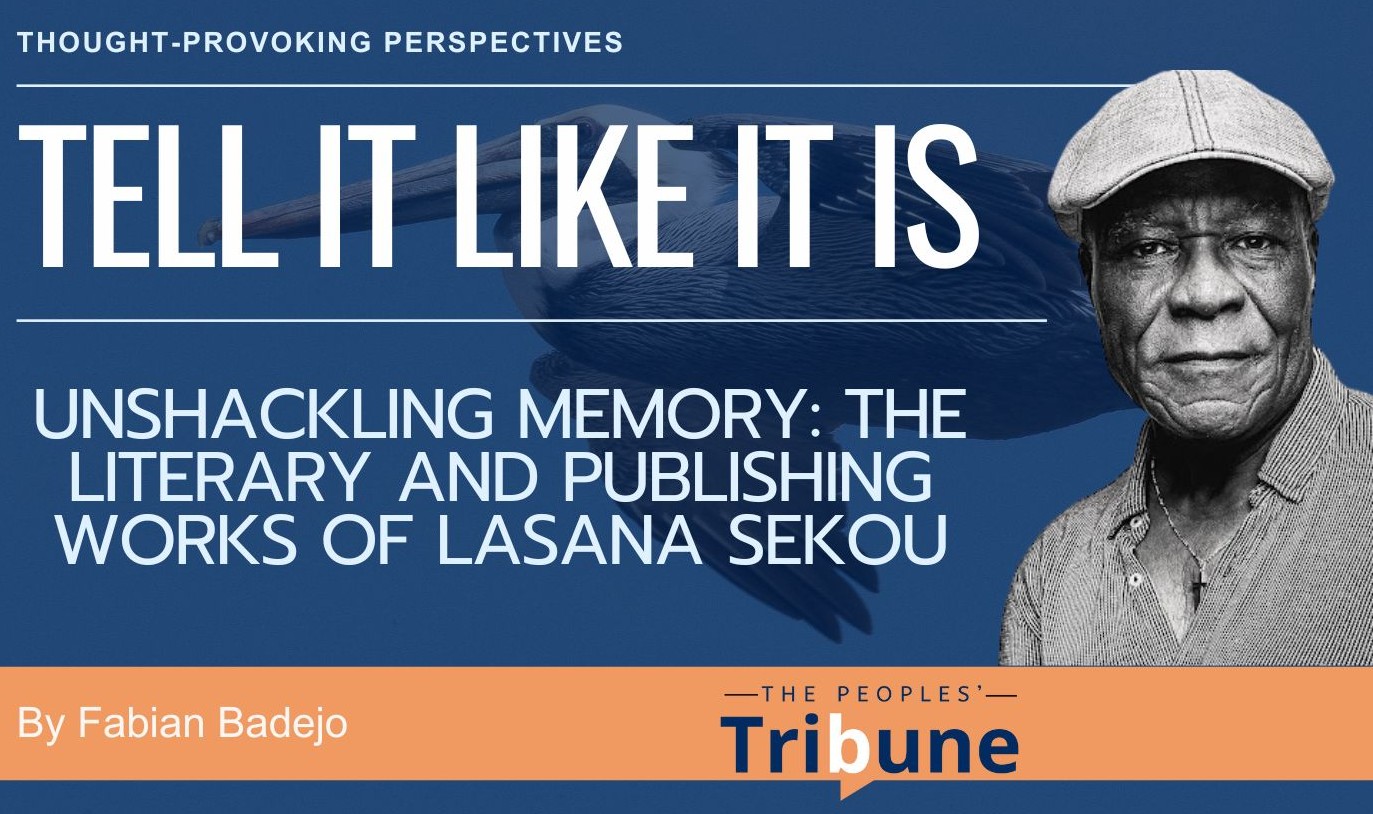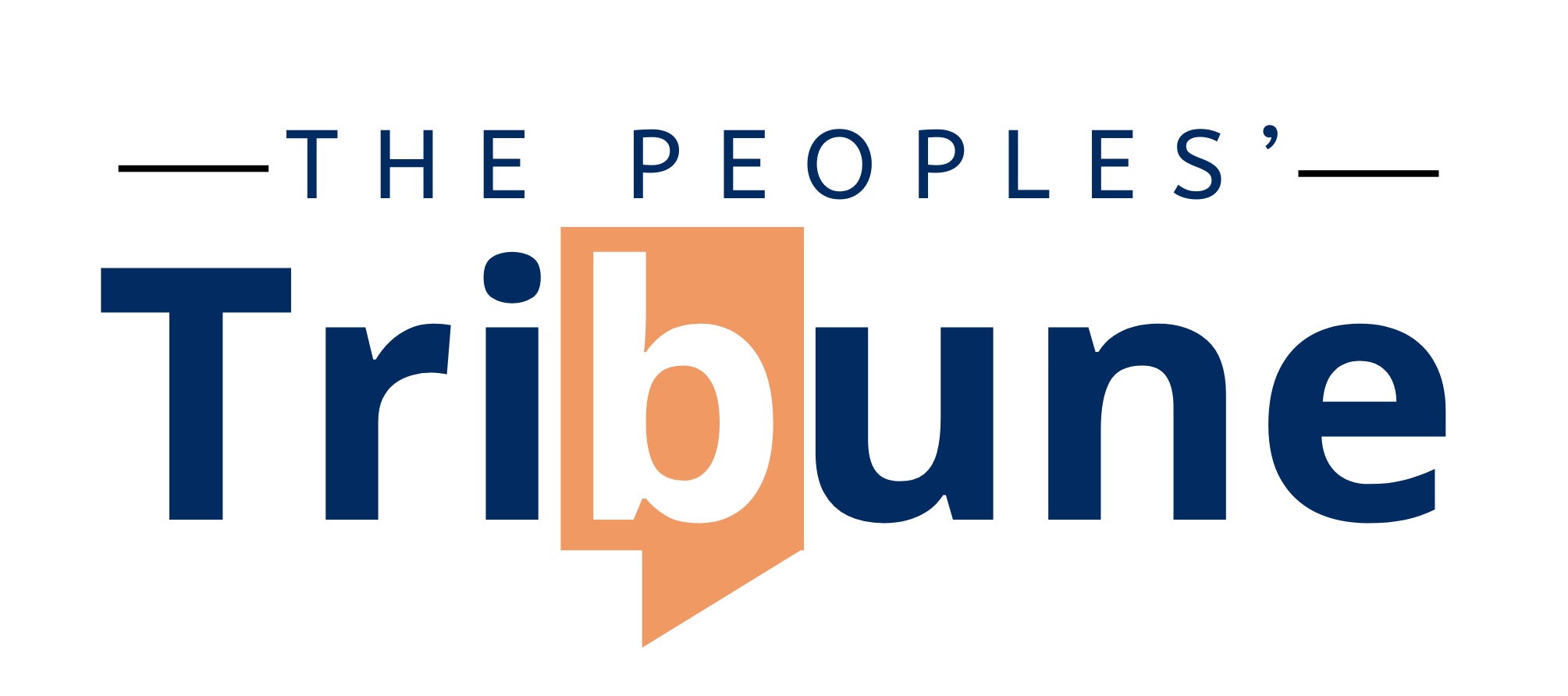Unshackling Memory: The Literary And Publishing Works of Lasana Sekou

𝘕𝘰𝘵𝘦: 𝘛𝘩𝘪𝘴 𝘪𝘴 𝘢𝘯 𝘦𝘹𝘤𝘦𝘳𝘱𝘵 𝘰𝘧 𝘵𝘩𝘦 𝘱𝘢𝘱𝘦𝘳 𝘐 𝘱𝘳𝘦𝘴𝘦𝘯𝘵𝘦𝘥 𝘢𝘵 𝘢 𝘱𝘭𝘦𝘯𝘢𝘳𝘺 𝘴𝘦𝘴𝘴𝘪𝘰𝘯 𝘰𝘧 𝘵𝘩𝘦 𝘴𝘢𝘮𝘦 𝘵𝘪𝘵𝘭𝘦 𝘢𝘵 𝘵𝘩𝘦 49𝘵𝘩 𝘢𝘯𝘯𝘶𝘢𝘭 𝘤𝘰𝘯𝘧𝘦𝘳𝘦𝘯𝘤𝘦 𝘰𝘧 𝘊𝘢𝘳𝘪𝘣𝘣𝘦𝘢𝘯 𝘚𝘵𝘶𝘥𝘪𝘦𝘴 𝘈𝘴𝘴𝘰𝘤𝘪𝘢𝘵𝘪𝘰𝘯 𝘩𝘦𝘭𝘥 𝘪𝘯 𝘚𝘵. 𝘔𝘢𝘳𝘵𝘪𝘯 𝘧𝘳𝘰𝘮 𝘑𝘶𝘯𝘦 1 -7, 2025.
The title of this panel implies that our memory has been shackled. I beg to differ from this characterization. Our memory was not shackled but systematically erased, cancelled, buried, destroyed and forcefully replaced with an alien narrative to the point that we have forgotten who we were and who we were destined to be.
Our task therefore is not to unshackle but to reclaim, resuscitate, recover and rehabilitate that memory, so that rather than become “memory-less” as Lasana Sekou sings in his poem, “Cradle of the Nation,” we would be able to re-member who we were. In this way, we would be better equipped to build that new Caribbean civilization rooted in our African heritage.
Lasana Sekou is a renaissance man, not in the European sense of the word, but in the Kemetic or African sense. And, since we’re reclaiming our history, may I remind us that there would have been no European Renaissance without Africa, without the 700 years of Moorish rule. The Moors - Black Africans - civilized Europe and brought it out of the dark Ages (I am tempted to say, out of the Heart of Darkness).
And if there’s any lingering doubts about who the Moors were, the Spanish word for it- morro - is today a synonym for Black all over Spain. Moreno another word for Black in Spanish is derived from Morro. The expression, “hay morros en la costa” which means “the coast is not clear” shows how deeply rooted the presence of the Moors was. But I digress.
There are three poems that are cardinal to understanding Lasana’s ideological position, his influences and activism. They are “Nativity”, “We Continue” and “Cradle of the nation.” These poems are long and employ multiple voices to deliver their powerful messages: that culture is not just entertainment and celebration but work, hard work (Nativity).
That Caribbean culture and civilization is one and indivisible and needs no outside validation to sustain itself. Consequently, we should not be strangers to one another but speak the same language of freedom. (We continue)
And that the “cradle of the nation,” which Sekou has identified as the Great Salt Pond in the case of St. Martin, offers us all a unique opportunity to reclaim our ancestral memory which has been erased, cancelled and buried by chattel Slavery and the evil system of Transatlantic Slave Trade in order for us to build a new civilization that exalts the humanity of all peoples.
Sekou, the poet, and Sekou, the publisher is both one and the same person, or if you want, even persona. Work. Build. Educate. This is the holy trinity for him. Our path to salvation, to freedom, development and prosperity is hinged on those three verbs.
In preparing for this panel, I revisited my essay “Publish and be blessed” in the collection, Salted Tongues published by House of Nehesi Publishers. I was reading it for the first time in the 22 years since I wrote it. My first reaction was one of anger at myself. What was I thinking then to describe HNP as a “small” publishing outfit? I guess I may have been unwittingly co-opted by Sekou’s humility in calling his brainchild, “a small indie press.”
Forty-five years later (by the way, that’s three generations!), I firmly believe that it is grossly inappropriate and inaccurate to call HNP “small”. What is small about a publisher who has published George Lamming, Kamau Brathwaite, Amiri Baraka, Shake Keane and oh yes, Lasana Sekou himself?
What is small about a publisher that single-handedly built modern literature in St. Martin? Lest we forget, before HNP, one could count the number of published authors in St. Martin on one hand that has three fingers! Before HNP, the publication of two poems in a magazine in Holland by a St. Martin poet was celebrated as if the author had won the Nobel Prize in Literature! Now writers from the island abound in the dozens in both fiction and non-fiction.
What is small about an independent press that had the testicular fortitude to publish Baraka’s Someone Blew Up America when no publisher, big or small, in the US would touch it with a 10-foot pole?
In fact, I make bold to submit to you that we should expunge the adjective “small” from our vocabulary whenever we are referring to ourselves; to the Caribbean region and to our existential reality. At best, it smacks of false modesty; at worst, it is the internalization of the colonial strategy of minimizing and diminishing our achievements when these cannot be completely denied or erased.
There is nothing small about St. Lucia, for example, which has produced two Nobel Laureates. There’s nothing small about Jamaica that has produced a Marcus Garvey, a Bob Marley and a Usain Bolt. There’s certainly nothing small about a Trinidad that gave the world a C. L. R. James, the steel pan and calypso. Or a Barbados that produced a George Padmore, Grantly Adams and Mia Mottley.
How dare we call Grenada small that gave us Maurice Bishop or a Guyana that birthed Walter Rodney? Who would call Cuba small that gave the world a giant like Fidel Castro? And don’t let me even talk of Haiti upon whose heroic victory over the most powerful military forces in the world at the time we all stand today.
And of course, what is “small” about St. Martin that has given us Lasana Sekou and HNP and Kearcy Carty?
In my view, part of the process of Reparations must include decolonizing our minds and the language we use to describe ourselves. We should all cringe when our nations are lumped together as Small Island Developing States. I have said at a different forum that it reminds me of the Spanish acronym for AIDS - SIDA! In the words of an African proverb, “It is not what you are called that matters, it is what you answer to.” We should not answer to anything that makes us less than anyone else.
However, I very well understand that Sekou uses “small” more in the context of the resources available to him. I confess, as an insider, that they are less than small; they are paltry. Nevertheless, the BIG picture is how he has consistently marshaled those very meager resources to continue to publish title after title for such a long time. This is a monumental feat, especially in a doubly colonized territory like St. Martin. It not only deserves our unstinted admiration but also a serious study in survival and resilience.
HNP is a not-for-profit organization. The only permanent staff it has is its Projects Director, employed I suspect, on minimum wage. One would have thought that given its proven track record, sponsors would be breaking down its doors. That’s far from the case. And I’m sure you can imagine why.
The uncompromising ideological position of HNP and its founder, which is unequivocally pro-independence for St. Martin and all the other remaining colonial territories in the region and beyond; its staunch Pan-African, Pan-Caribbean and anti-imperialist views and its unwavering belief in doing for self while eschewing the dependency syndrome, make HNP largely unattractive to potential sponsors (both corporate and government) with deep pockets.
This has not deterred it from continuing to work, to build and educate. Sekou understands the power of publishing and its immense role in telling our own stories and controlling our own narrative.
Publishing is a business not for the faint of heart. It rests on four wheels which have to work in tandem to deliver a marketable product, the book. We must therefore see the book as an industry, not a la Derek Walcott who saw it as the product of the industriousness of the writer, but instead as the end product of an assembly line process that starts with an idea and ends in the hands and eyes of the reader.
Imagine how the whole publishing sector would be were we in the Caribbean to see the book as an industry that requires building, that needs proper investment and deserves to be treated as essential for our survival as tourism is.
I spoke earlier of the Pan-Caribbean standpoint of Lasana Sekou. This is reflected not only in his poetry but also in his work as a publisher. It derives from his views that the same colonial languages that divide us can be used to unite us. I do not know any other publisher in the region which, as a matter of policy and philosophy, publishes in the same volume, the translation(s) of the original work.
HNP has, whenever the resources have permitted, put out bi- and trilingual publications of the same book. In a particular instance, it published “Columbus the Moor” by Charles Matz in four languages. This is not just unique; it is revolutionary. It makes the book more accessible to a wider readership and is a practical way to promote regional integration.
George Lamming’s seminal book, “Coming, coming home,” Chiqui Vicioso’s “Eva/Sion/Es” and Emilio Jorge Rodriguez’s anthology of Sekou’s poetry, “Pelican Heart/Corazón de Pelicano” are prime examples of this new approach to publishing.
I have argued that the linguistic make up of St. Martin lends itself almost naturally to this kind of multilingual editions. I think the question now is, how do we see the next 45 years for HNP and generally for publishing in the region?
The advent of e-books and AI makes this question not about the future but about the present. I don’t have a crystal ball. My wish though is that whatever it takes, we must find a way to continue the work that Sekou has been doing at HNP for the last 45 years. That we recognize the importance of publishing in the region and that we never sacrifice excellence, creativity, innovation and scholarship in telling our own stories to ourselves and to the world.
